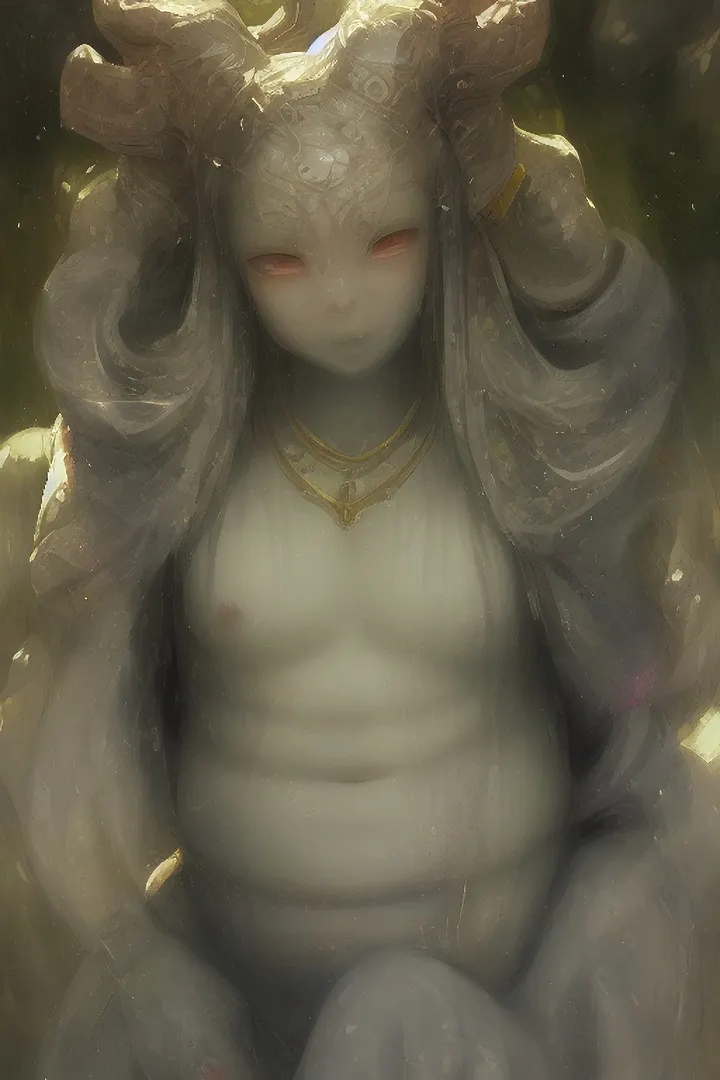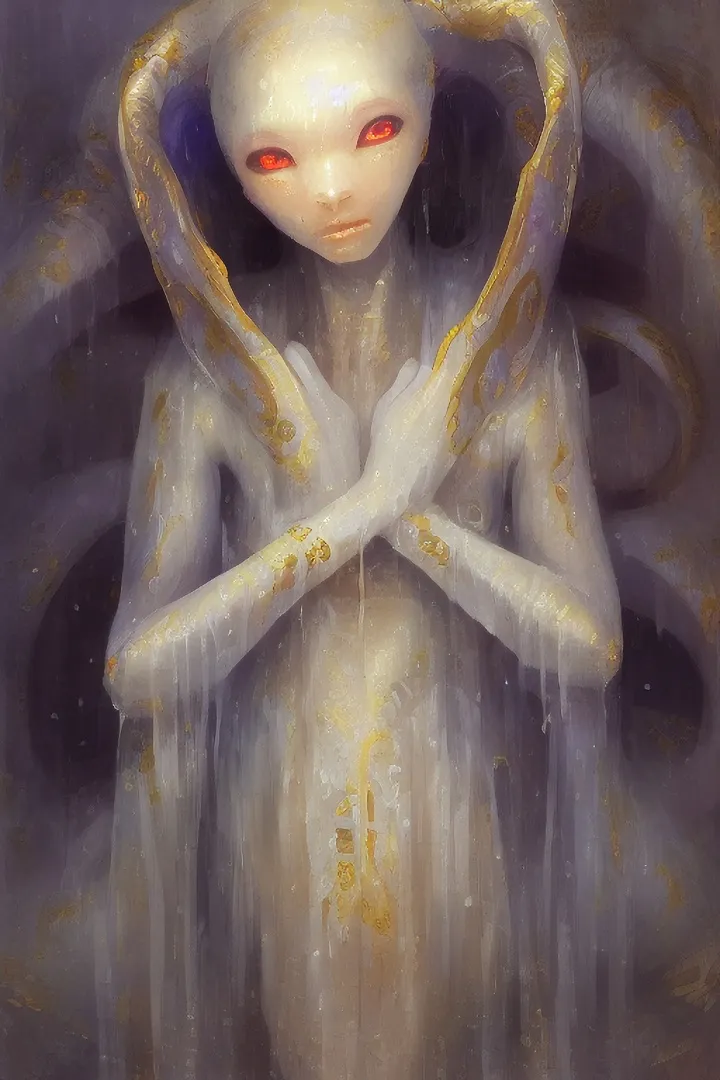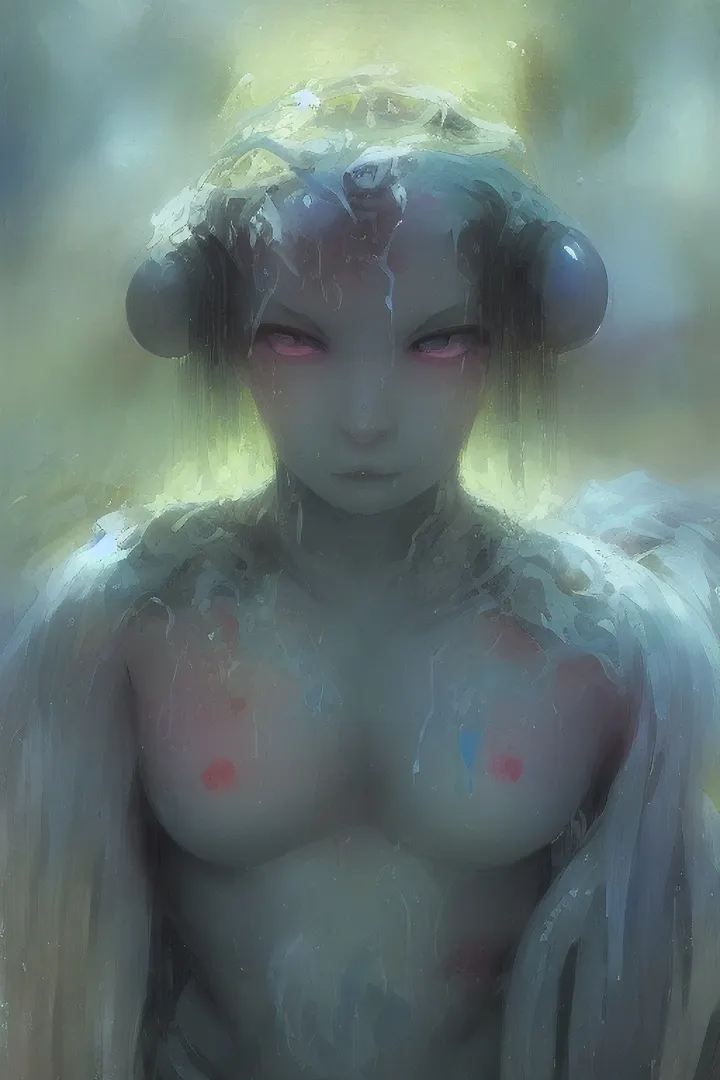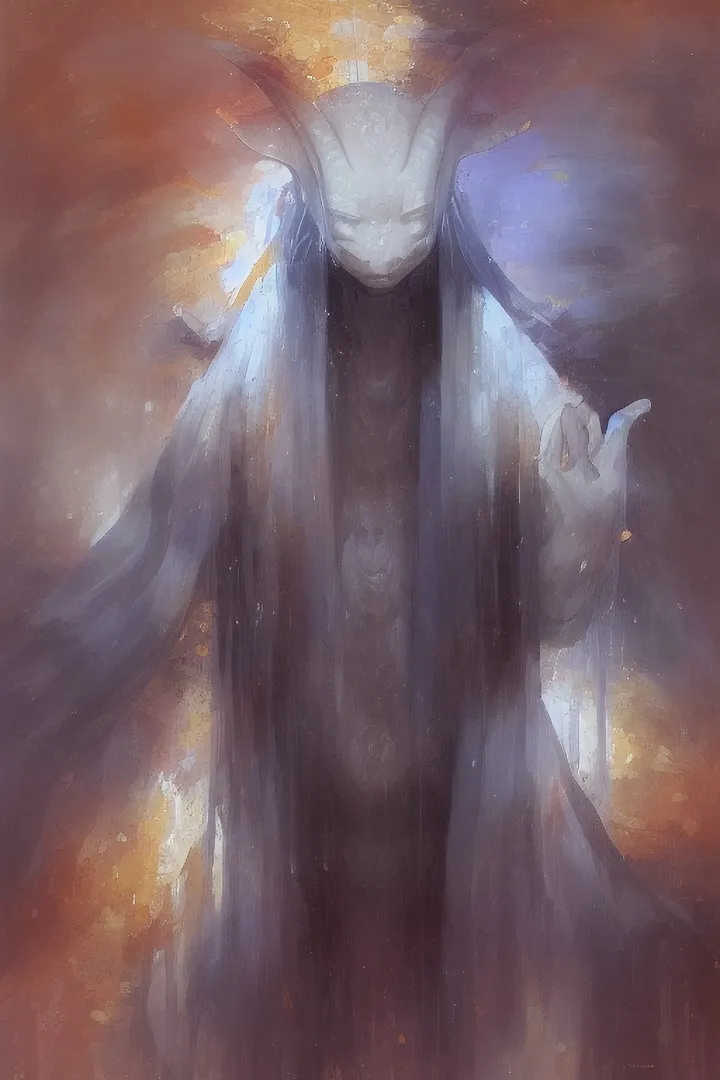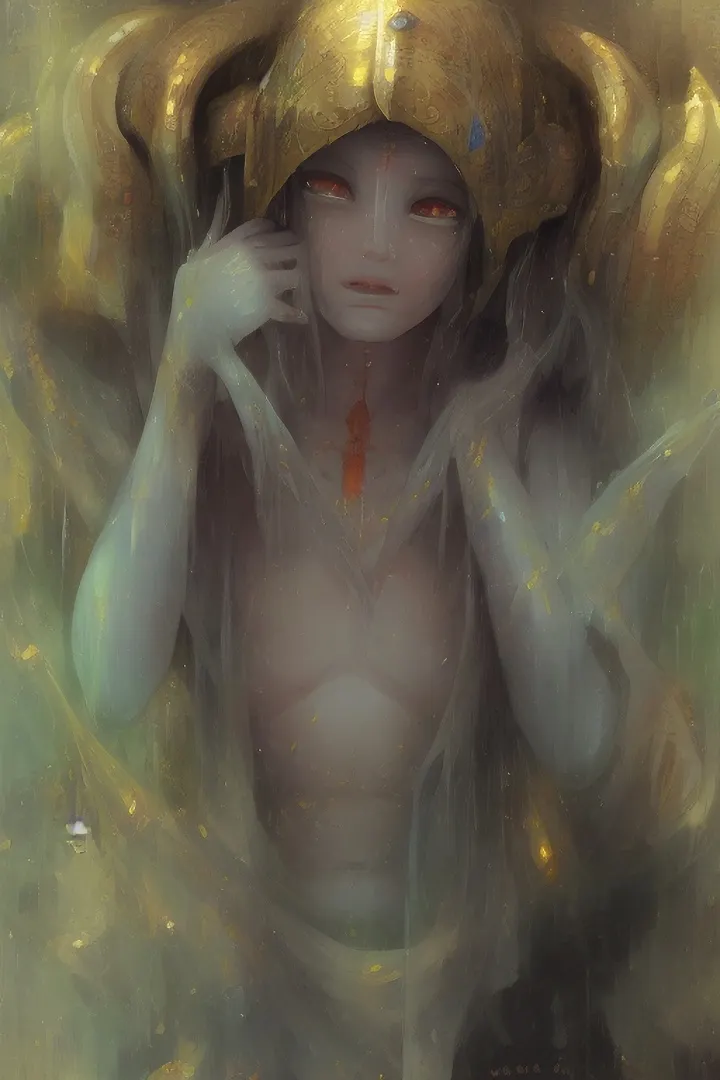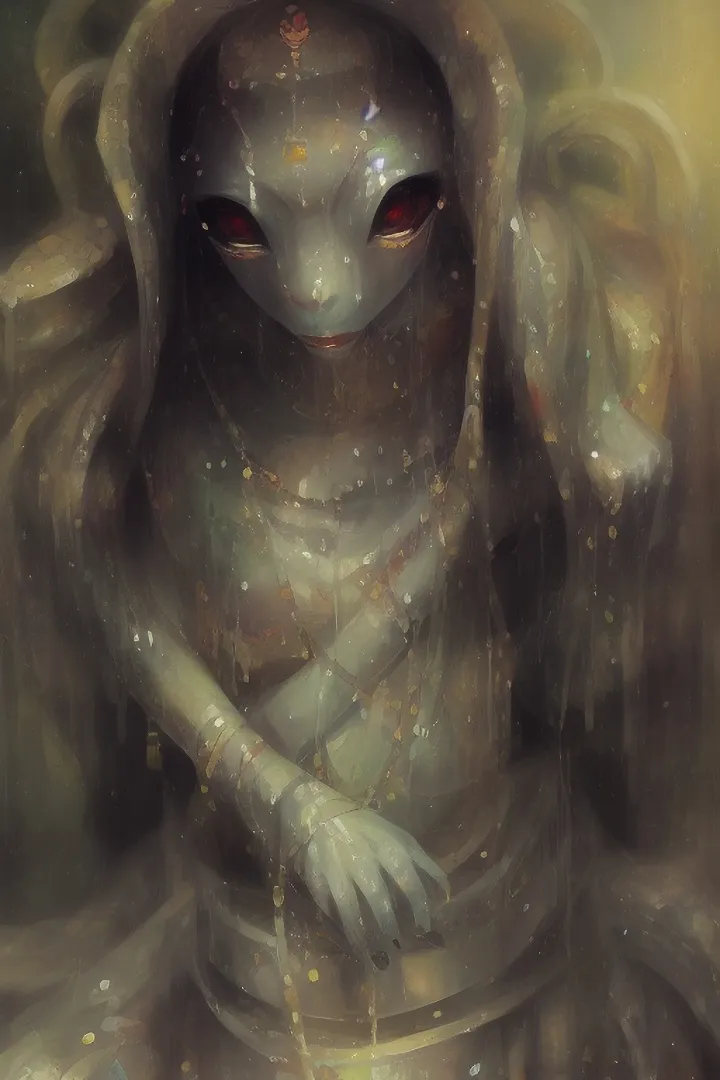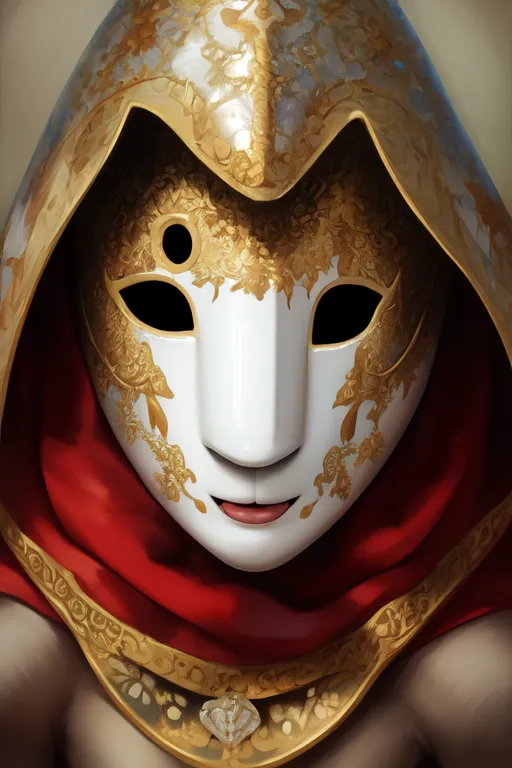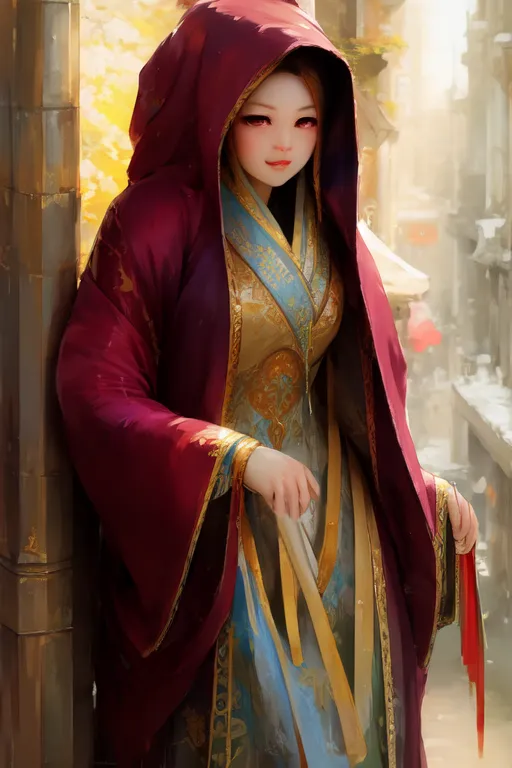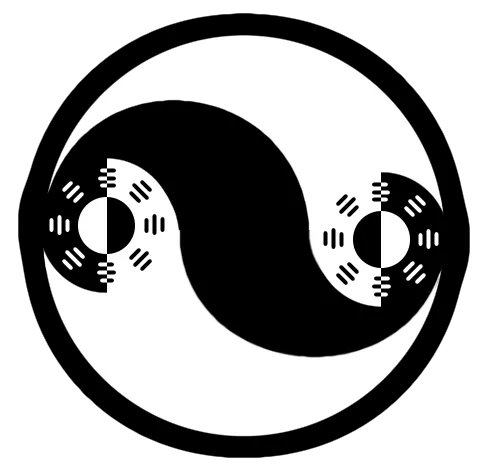
Worshippers, Clergy, Temples | Dogma | Appearance | Relationships & History | Related Images
The Kami are nature spirits who were elevated in form, thought, and power by absorbing the essence of the Old God of nature when he was slain by Irus. They serve as the warden, jailors, guards, and workers for Irus's prison (ie: All territory contained within the God Wall). To accomplish this divinely appointed task they organized themselves into a bureaucracy known to mortals as The Court of Kami.
The Court of Kami is a religion based out of Deivheim. It was created by the Old Gods when they left Zo behind, and holds the purpose of upkeeping the God Wall, a mystical energy barrier serving to keep the god Irus imprisoned within Eyom. The Kami are elevated nature spirits which received fractions of the power of true gods during the Irisian War, as well as when the Old Gods departed. The Kami mortals as little more than tools to use for their work, but are worshiped and obeyed nonetheless. Few treat the Kami as a true religion, but most obey them due to simple necessity and enforced authority.
Those who worship the Kami see them as the dispassionate entities they are, yet also as essential to everyone's survival. They are agents who keep the world safe. Of course they care less about you individually. They care for the collective. In their worshiper's eyes, its your job to care for individuals. Including yourself and others.
The Court of Kami has a second duty aside from maintaining the God Wall, and that is overseeing the development of the young god Khristos. Khristos is an accended mortal who absorbed the mantle, but not powers, of the Old God of nature. He is exceptionally terrible at using divine power due to being the equivalent of an infant. The Kami see his development as their end goal because once fully developed Khristos could potentially put an end to Irus once and for all.
"I don't understand. Do you want Irush to have free reign? We showed you the magnaflow. We showed you the proof. If this town remains standing the mana flow will diminish the God Wall's power by point-six-eight percent. You must relocate... Or die. I would prefer you relocate, as a higher population in the surrounding regions would boost the Wall's energies by point-one-seven-percent. You have eight minutes, and honestly... I will be punished for allowing you a choice."
- Ommus Verrus Kerrus
Worshippers, Clergy, Temples
The Court's followers do not see religion as a means of self-improvement, or spiritual growth, but rather as necessary labor. This is not a view which most people are comfortable with holding, hence most of Eyom's citizens follow another religion, though they will take the COurt seriously, treating it as a political body rather than a way of life or religion.
Those who follow the Court see the value in systems, both natural and manmade. The preservation, maintenance, and construction of these systems are of paramount importance, more so than any individual's life. Every shrine that fails weakens the prison walls and brings Irus one step closer to unleashing his wrath on the whole of Zo.
These facts overshadow everything else for the mortal faithful and Kami alike. Any action can be justified and glorified if it furthers the God Wall in some way. This is the primary belief held by those who follow the court, but as the name "court" implies, there are myriad and byzantine codes of laws applicable only within specific jurisdictions. From the perspective of the religion's followers, their town's kami is an arbiter of divine law, and the laws they have established are to be heeded more than even the laws of the land themselves.
Whatever those laws may be, they are the words of a divine, and serve to, in some way, ensure the land remains safe and secure, while weakening the enemy of mortal kind.
Agents, mortal or otherwise, who follow the court are those who have come into an understanding of these codes, how they operate, what they do, and agree with the Kami's methodology. They will do as they are told, questioning little, and effectively acting as divine repairmen and construction workers. They see this as a noble task, and are largely fulfilled in life due to this given purpose.
Vestments
The Kami have extremely precise instructions for their clergy's vestiments. There exists an exact uniform comprised of several layers of luxurious embroidered robes. THe inner robes are white, pale blue, ad gold, with the other robe being a warm maroon with gold trim. Ribbons marked with sacred runes are common adornments to the robes and serve as rank insignias. The robes as a whole serve as amplifiers for divine energies. Not so much that another divine would want them, but enough to allow their clergy more potency vs other mortals channeling divine power.
The most notable and variable element of these vestiments is the mask. Each individual wears a porcelain mask which depicts the specific kami they serve in a stylized fashion. These masks are meant to get mortals to attribute all of the clergy's actions to their particular Kami. This dosn't work at all, as the general public simply learns to recognise a given individual by voice.
Hierarchy
The hierarchy of Kami is beyond labyrinthian in scope and describing it to any degree other than "The eldritch horror of bureaucratic org charts." (to quote a Phistophilus Devil) is a fool's errand. There are over 68,000 formal titles, ranks, and positions within the Court. All one need know is regional governers are known as Potentates, who ultimately answer to Illustrious Potentates, and the head of the Court is referred to as the "Grand High Consummate Kami-Guru High Impecable of Eyom".
The ranks of their clergy, on the other hand, can be summarized. The High Court commands the entire church, with all of its members outranking all others. The Local Court manages individual regions, and outrank all members of the other courts, save the High Court. Township Courts govern the church's officials within a particular township, and share some authority and power with the Chappel Servants who manage individual church buildings / estates. Each rank is ordered form greatest to least, and between the Township and Chappel ranks, equivalent numbers hold equal authority.
High Court
- Ecumenical Patriarch / Matriarch of Divheim
- Patriarch / Matriarch
- Archbishop (of a national Church)
- Archbishop (of an independent Church)
- Archbishop (of a sub-national Church)
- Metropolitan
- Titular Metropolitan
Local Court
- Bishop
- Titular/Auxiliary Bishop
- Priest (Presbyter)
- Protopriest
- Archpriest
- Archimandrite
Township Court
- Hieromonk (Priest-monk)
- Priest's Spouse
- Deacon
- Protodeacon
- Archdeacon
- Hierodeacon (Deacon-monk)
- Deacon's Spouse
Chapel Servents
- Abbot / Abbess
- Monk
- Rassophore Monk
- Fryer
- The Chappel's Dog
- Apothicary
- Stavrophore Monk
- Summoners
- The Chappel's Cat
- Schemamonk (Shrine Maiden)
- Novice Monk
- Nun
- Rassophore Nun
- Novice Nun
- Lord Khristos
Temples
The most common form of temple within the Court of Kami are known as Kami Houses. These small home-like cabin-scale structures are sprinkled everywhere within Eyom's in habited places, and are little more than the gateway to a small demi-plane where an individual Kami resides along with their personal clergy. These serve as places for mortals to leave offerings, and always contain a small shrine on the property for public use.
The Court also makes use of conventional chappels, monasteries, temples, and cathedrals. These serve as places of worship and power for their followers, but primarily as places for the Kami to organize groups of mortals for projects, works, and other such activities.
Rituals
The Court of Kami creates rituals for mortalkind as rewards for individuals who aided them to a noteworthy degree. These rituals can be used by anyone who knows them, as the reward is simply getting any help from the Kami without trading for it. A brief collection of some of the many rituals follows:
- Those hoping to be lucky in love must consecrate human bones with incense in a ritual space under a quarter moon when the days grow long. This will reveal the name of their true love.
- Anyone trying to summon a demon may interpret cast runes under a waning moon in the summer to learn the name of a demon that they may then bind it. This does not assist with binding the demon, it merely provides a target.
- Anyone wishing to gain the protection of the Kami must burn the entrails of a cat at an altar under a waxing moon. They will then be highly resistant to the specific form of harm they believed would befall them for a year and a day.
- Mystics wanting to redeem themselves from wicked deeds can sacrifice a serpent upon an altar at high noon on the spring equinox. This will clean their bodies, minds, and souls of all corruption.
- Merchants hoping to be cleansed of sin can interpret the movement of the clouds beneath a tree under a waxing moon. If the clouds are right, they can then give a year of profit to charity and be fully atoned.
- Clerics needing to win the favor of the Kami can be voluntarily flogged at a specific temple, with all blood being collected in a silver vessel, then mixed with lamp oil and burned during a night of prayer. Doing so will reward the Cleric with an hour of a Kami's time per 8 lashes.
- Anyone desiring to consult the fates must offer a gift of finely crafted items in a temple at sunrise on either solstice. Doing so will reward them with a single casting of Commune.
- Mystics seeking to summon a ghost can do so by sacrificing a white goat in a forest during the day, provided it is no more than 29 C, the wind is less than 18 kph, and its partially cloudy. In which case, provided the decided is no more than 8 months dead, their spirit will be called to the sacrifice site to speak with the living for one second per kilogram of the sacrificed goat.
- Farmers desiring to divine the future can consecrate a dagger in a temple at night in the spring. The dagger can then be thrown at a target carved from oak with simple answers burned into the surifice. For the next year and a day, the dagger will always strike the correct answer.
- Wizards desiring to be spiritually healed can consecrate their spirit with fire between dusk and dawn at harvest time by making a full copy of their personal spell book and then burning it at a shrine to a Kami.
- Farmers needing to win the favor of a demon must consecrate a meal with incense in a forest in the morning after the first thaw. This meal is then to be fed to the demon, who will be under the effects of a Gees spell managed by the Kami which will force the demon to comply with the farmer's wishes.
- Anyone needing to receive penance for minor sins can interpret a pattern of cards at a shrine at midnight when the days grow short. This process bears a remarkable resemblance to poker, save that whoever wins the game is visited by a lesser Kami and cleansed of all sins before the whole of the group of players.
- Anyone desiring to find a missing person must slay a serpent in the soil at a holy site at sunrise in the spring. The serpent's death throws will etch an image of the missing person's current location within the earth.
- Anyone wishing to avenge their family may offer lengthy prayers in a temple during the day after the first frost. Once the litany has been completed, the individual is to cut open their chest above their heart and soak a cloth in their own blood. Once the cloth is fully stained, their wounds are magically healed, and the cloth grants the individual the powers of a sorcerer for three months, or until they have avenged their family.
Orders
There are countless orders within the Court of Kami. The best known are: The Kami-Lawyers, a group of mortals practicing law with the express purpose of assisting mortals in being served by the court when the court has violated its own rules. The Union of Shrine Maidens, who maintain shrines all across Eyom and are only well known for the one time they went on strike which resulted in an Irus Walk. The League of Clerics, a group of warriors (not necessarily clerics) who act to enforce the court's rulings in situations where violence is required to do so.
While not well known, or even commonly known, the Court maintains the Ordo Angelorum qui Vocat (The Order of Angel Summoners). These individuals are bound to a divine creature and trained in the art of calling it to the material plane in order to perfom the Kami's will. In essence, these specialy trained mages are able to permit extra-planer beings to exist on the prime material plane without risk to it, and more importantly provide it with the ability to be placed exactly where it needs to be when it must be there.
Dogma
A list of general values held by mortal followers of the court:
- Compassion is the only thing keeping our species alive.
- Of all tenents, this is seen as unbreakable. All actions taken by the faithful are in service to others, or communities.
- Even hostile actions against others will be made for the benefit of others in need.
- Harmony of one's self with their environment is of crucial importance.
- This is more about conforming to local culture than eco-positivity.
- Maintaining a specific balance within the natural world is also relevant to this.
- A net neutral environmental impact is often desired.
- Many locations may be mandated to increase the strength of natural ecosystems around them.
- Some locations may be instructed to devastate the local environment (Often to alter energy flow patterns).
- Irus's will must be opposed when discovered.
- The construction and maintenance of Shrines is more sacred than mortals can fathom.
- Court followers have started wars over accidental damage to a shrine.
- Constructing a shrine is a form of spiritualistic purification all undergo several times in their lives.
- Reducing suffering weakened Irus.
- This is not a ban on violence, the Court requires violence be employed in many situations.
- General goals appear to be to try and ensure the least suffering occurs long term.
- Example: If the destruction of every last man, woman, and child, in a town would advert a major plague that would kill thousands more, the Court would order that town's immediate destruction.
Appearance
The Kami are vastly different from one another, with many subforms and subspecies. They each have their own personalities, wants, needs, and goals. They are, in many ways, much like mortals. Yet the detached manner in which they regard immortal creatures puts many people on edge, as it gives the kami an unsettling and otherworldly quality that gets under the skin of most.
The kami are aloof, tired, and seemingly stressed. They are duty bound, loyal, and care for the greater good (at least, what they believe to be the greater good). More than this cannot be said of them as a whole. They are individuals, as varied in passions, pleasures, distastes, and loathing as any group of mortal creatures.
While most Kami are loath to directly involve themselves in the daily affairs of mortal beings, a small number delight in interacting with "Those of Brief Flame" and will form personal relationships with mortals. These act much the same as Eyom's minor gods, and are often mistaken for such beings themselves.
Kami have attunements, creating six subtypes: Day, Night, Fire, Water, Earth, and Air.
Relationships & History
The Court of Kami goes all the way back to the beginning of civilization on Eyom, and even a little byond that in one form or another. As the second oldest religion in Eyom, it's had its hands in almost everything, almost everywhere. It's also made countless enamies, far more so than friends.
The Court is in many cold wars with other religions, especialy those that do not revere a deity, and particualry the Imperial faith "Friends of Bo" as they despise their exhiled Brother for flourishing as he has. They often start proxy wars with their enamies, so often that many people assume any given conflict is in some way the Court's fault if not outright doing.
